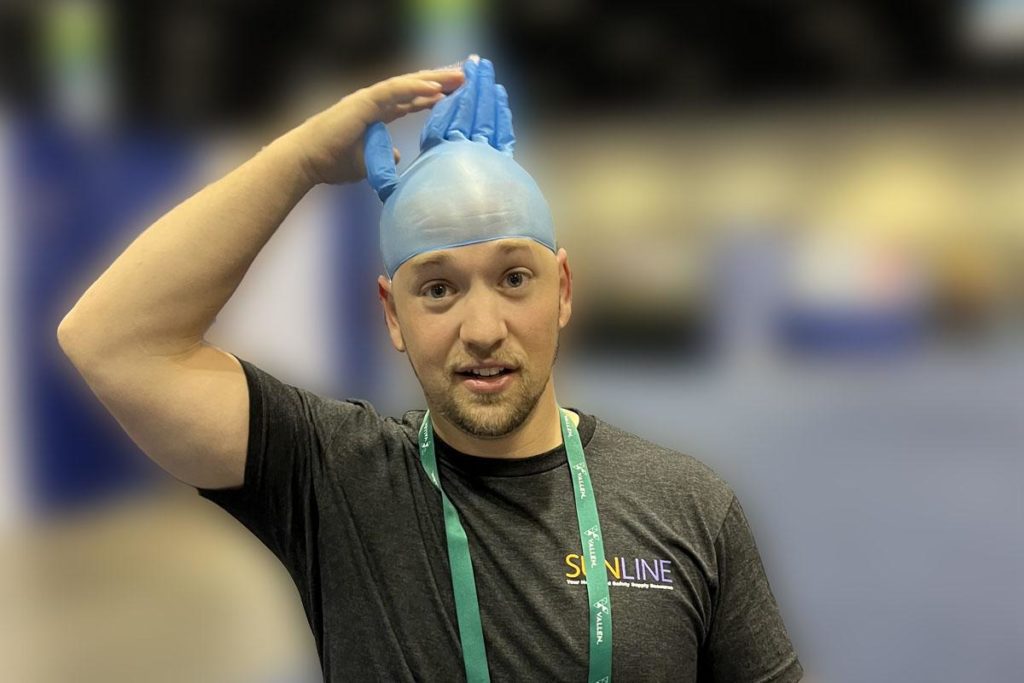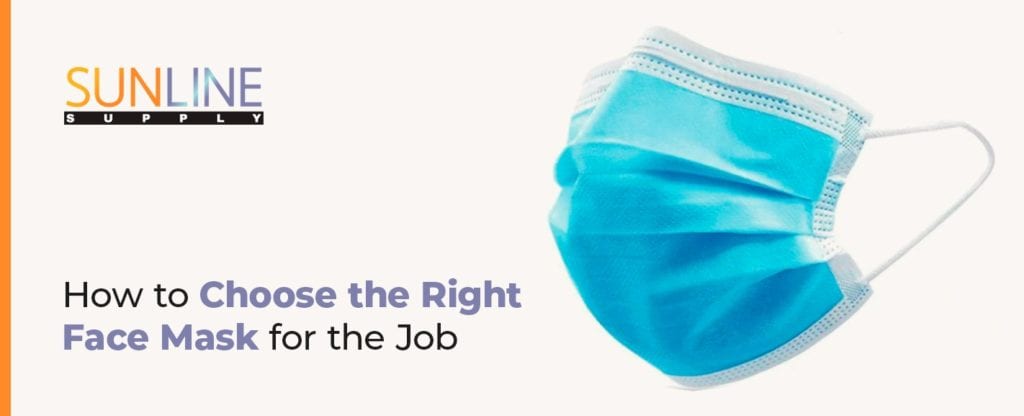
How to Choose the Right Face Mask for the Job
The type of personal protective equipment (PPE) your employees need can vary depending on the work they’re doing and the hazards they will face. Face masks and respirators cover people’s noses and mouths, reducing the airborne particles, vapors or gases they might inhale. Masks can also reduce the spread of particles a wearer exhales. Some types of work always require a mask or respirator, while others may only occasionally mandate a face covering.
To ensure your team members have the appropriate level of protection on the job, it’s essential to choose the right type of mask. Learn more about the different masks available, what they do and how to wear them for maximum protection.
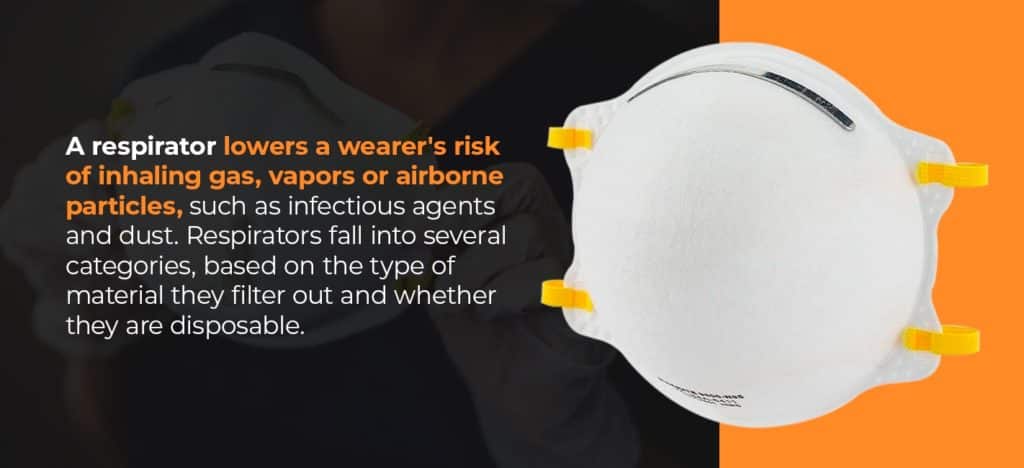
Respirator vs. Face Mask
Many professionals have worn surgical masks, respirators and other face coverings on the job for ages. However, the COVID-19 pandemic drew the public’s attention to the need to wear a mask in specific situations. Increased demand for masks and other PPE led to some confusion about the different options for covering the nose and mouth.
Not all masks are the same. Some offer better protection than others and are better for use in particular situations. One thing to understand when you are purchasing masks, either for employees to wear on the job or for general use, is the difference between respirators and surgical masks.
A respirator covers the nose and mouth, forming a tight seal on the face. A respirator lowers a wearer’s risk of inhaling gas, vapors or airborne particles, such as infectious agents and dust. Respirators fall into several categories, based on the type of material they filter out and whether they are disposable.
Face masks have a much looser fit compared to respirators. They can catch droplets the wearer exhales. The goal of wearing face coverings is to reduce the spread of colds, the flu and other respiratory illnesses. Although washable fabric masks are available, generally speaking, surgical masks are single-use.
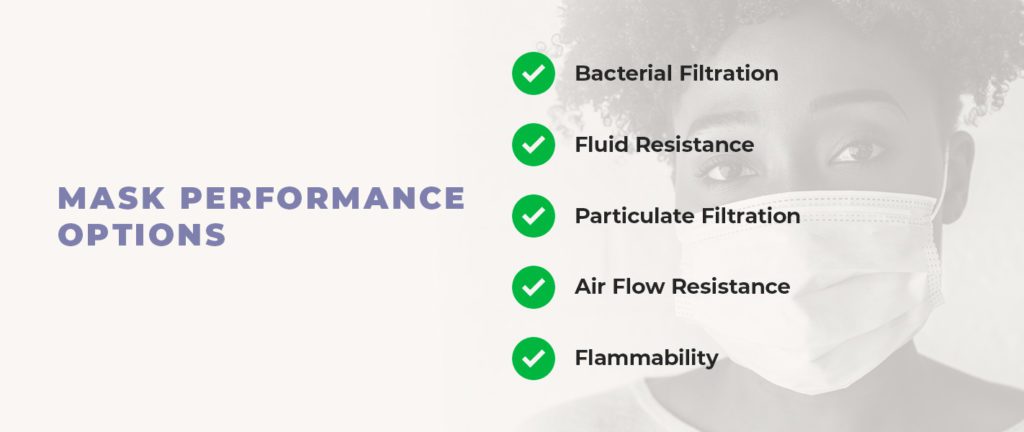
Mask Performance Options
Masks and respirators undergo testing to evaluate their performance in a variety of situations. ASTM International has developed a standard for mask manufacturers to determine the level of protection their products offer. Masks that undergo testing to see how they perform against ASTM Standard F2100-19e1, Standard Specification for Performance of Materials Used in Medical Face Masks, receive a ranking from 1 to 3.
Level 1 surgical masks provide the least amount of protection. They are suitable for use in limited-contact situations. Level 2 masks offer a moderate level of protection, and Level 3 masks are for use in circumstances that necessitate a high level of protection.
Several tests determine the appropriate ranking to assign to a mask, including tests to evaluate how much fluid can get through the material, how flammable the material is and how easy it is to breathe while wearing the mask.
Bacterial Filtration
A bacterial filtration test aims to determine how well the mask’s material can filter out bacteria larger than 3 microns. The tests use Staphylococcus aureus bacteria. Testers place the bacteria in a liquid suspension and deliver them to the mask’s material in an aerosolized spray.
After this first step, testers compare the material to a control mask to determine how much bacteria have filtered through. The control materials have between 1,700 and 3,000 colony-forming units. The test can report efficiencies of up to 99.9%.
Fluid Resistance
The fluid resistance test measures how well a mask’s material can withstand a steady stream of synthetic blood. This test can reproduce a scenario in which a patient is losing a high volume of blood during surgery.
During the test, technicians place the mask against a high-velocity stream of synthetic blood, mimicking that which might spray from a cut artery. They let the artificial blood flow for several seconds. Afterward, they remove the mask and examine it to see if any blood has permeated to the other side.
The fluid resistance test is pass/fail. The material passes if no blood has penetrated it. If there is blood on the opposite side of the mask at the end of the test, it fails.
Particulate Filtration
The particulate filtration efficiency test measures the number of particles over 1 micron the mask’s material effectively filters out. It does not measure the protection level of a mask, but is instead a quality indicator. Some masks that score highly on the particulate filtration efficiency test are less effective than N95 respirators.
The test uses an aerosol spray made up of polystyrene latex spheres that measure around 1 micron in diameter. The spray travels at a rate of 28 liters per minute.
Air Flow Resistance
The airflow resistance test measures how breathable a face mask is. During the test, technicians direct a controlled amount of air through the mask’s material. They measure the pressure both before and after the airflow starts. Then, they divide the difference by the surface size of the sample, measured in square centimeters. Masks that have a lower airflow resistance rating are usually more comfortable to wear.
Flammability
During the flammability test, technicians expose the mask material to a flame. The test measures how long it takes the fire to travel up about 5 inches of the material. Materials that receive a Class 1 rating do not combust too quickly and are safe to use in clothing and other wearable objects.
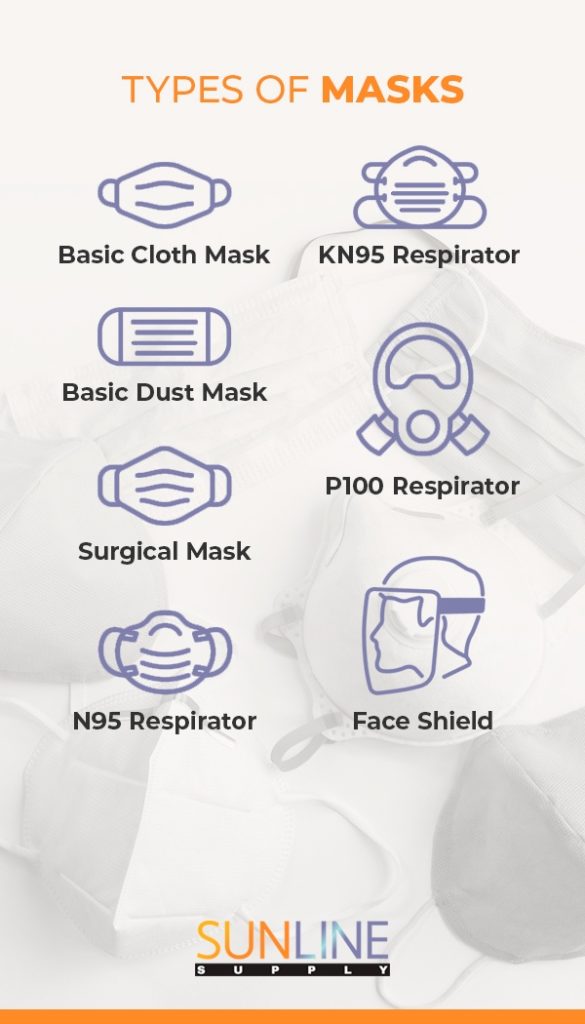
What Are the Different Types of Masks?
Different types of masks offer varying levels of protection. Some masks, such as surgical masks and N95 respirators, undergo independent testing and certification. Others, such as dust masks you might purchase at a hardware store or cloth masks a friend might sew for you, do not.
The right mask for you depends on where you will wear it and what you need it to do. Keep reading to learn about the array of masks and respirators available.
Basic Cloth Mask
The most common cloth face mask material is quilting-weight, woven cotton. These face coverings can be handmade or store-bought. Some styles contain a filter between fabric layers, while others consist of several stacked sheets of fabric sewn together.
Cloth face masks rose to prominence during the COVID-19 pandemic, as public health officials recommended wearing them to slow the spread of the virus. The masks catch droplets we emit when we sneeze, cough or talk.
Basic Dust Mask
Dust masks, or disposable cone-style masks, are typically available at hardware stores. People working on construction or home improvement projects usually wear them, as they help limit the amount of dust, vapors and gas that reach a wearer’s nose and mouth. Although they do a decent job preventing the inhalation of particles and vapors, dust masks tend to be less effective at trapping airborne droplets.
Surgical Mask
Surgical masks are loose-fitting, disposable, FDA-cleared masks. They typically consist of a non-woven material, and their design allows them to cover the mouth, nose and lower part of the chin or jaw.
The goal of surgical masks is to keep airborne pathogens from traveling in a sterile environment, such as an operating room. When worn during surgery or other medical procedures, the masks offer protection against the spray of blood and other bodily fluids. People are also wearing them during the pandemic to limit the spread of the virus that causes COVID-19.
N95 Respirator
An N95 respirator is a disposable type of respirator that filters out particulates. It can filter a minimum of 95% of airborne particles during a worst-case scenario test. The “N” in the name refers to the fact that the respirator is not resistant to oil.
Unlike surgical masks, which reduce the spread of exhaled particles, N95 respirators keep wearers from inhaling particles, including bacteria and viruses. The respirators do not offer adequate protection against the inhalation of vapors or gases.
KN95 Respirator
The significant difference between a KN95 respirator and an N95 respirator is the country of origin and the standard used to label the mask. Both types filter out 95% of particles. But KN95 is the regulation used in China, while N95 is acceptable in the U.S.
Currently, U.S. hospitals and medical settings only allow the use of N95 respirators. KN95 masks are under review for FDA approval, though, and is still considered to be suitable for the general, non-healthcare population who want to reduce the spread of illness when they are going about their day-to-day lives or working in an office setting.
P100 Respirator
While the “N” in N95 means the respirator is not oil-resistant, the “P” in P100 means the mask is oil-proof. People who might encounter oily particulates can wear this respirator with confidence. The “100” in the name means the respirator can effectively filter out nearly 100% of all particles.
Typically, workers in industrial settings wear P100 masks, and they’re less common in health care settings.
Face Shield
While face masks and respirators prevent contaminants and germs from entering or exiting the nose and mouth, face shields protect the eyes. People can wear them with masks or respirators to provide an additional layer of coverage to the face, but shields can’t replace a mask or respirator.
How to Wear a Respirator
There are right and wrong ways to wear a respirator. It’s essential to wear a brand that fits and that provides a tight seal around the edges. Check the fit and seal of the respirator every time you put one on.
Trying on respirators can be a trial-and-error process. Just as you would move around when trying on a new pair of jeans or shoes, move your head and talk while wearing the respirator to confirm that it seals fully and fits well.
If you have facial hair, you might need to go clean-shaven to prevent the hair from interfering with the respirator’s seal.
Before putting on a respirator, wash your hands for at least 20 seconds. Then, hold the facepiece in one hand with your fingers near the nosepiece. Place the mask part of the device over your mouth and nose, covering both fully.
Using your other hand, pull the top strap of the respirator over your head. Wrap the lower strap around the back of your head and clip it in place, if needed. If the respirator has a built-in metal nose clip, shape it so it gently pinches your nose and holds the mask in place.
How to Wear a Face Mask
Like a respirator, a face mask must fully cover the nose and mouth to work effectively. Leaving your nose uncovered allows droplets from your exhalations to travel through the air. If there is a risk of inhaling particles, vapors or gas, you can easily do so when nose is exposed.
Unlike a respirator, the fit of a surgical or face mask is looser. There is no need to get a tight seal. The mask should be snug, but not airtight. You should still be able to breathe comfortably through it.
Wash or sanitize your hands before handling your mask. If possible, only touch the mask by the ear loops or ties. To don the mask, position the top to cover your nose. The mask’s top edge should stretch just below the eyes and across the bridge of the nose. Tuck the bottom edge of the mask underneath your chin.
To secure the mask in place, tie the mask’s ties behind your head or hook the earloops over your ears.
Throw out single-use, disposable surgical masks after wearing them. Wash reusable masks in hot, soapy water and dry them on high heat after each wear.
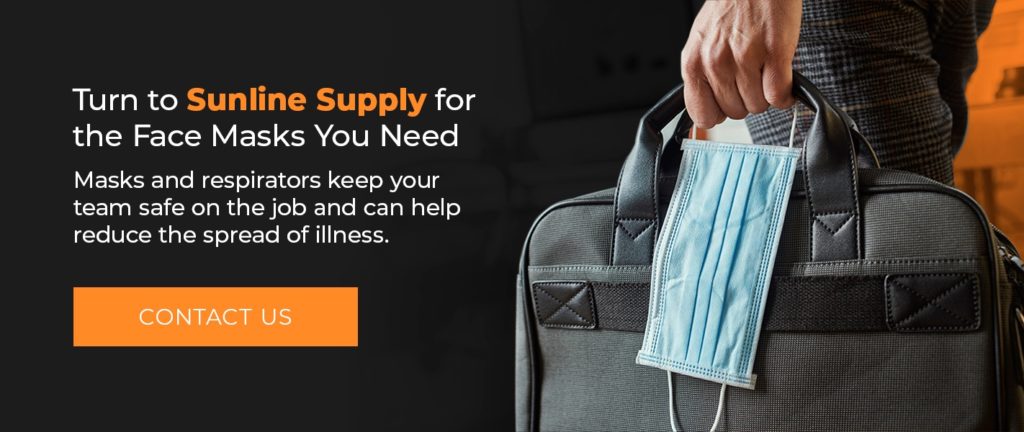
Turn to Sunline Supply for the Face Masks You Need
Masks and respirators keep your team safe on the job and can help reduce the spread of illness. Sunline Supply is a dedicated PPE distributor with a priority of keeping you and your employees safe. We offer a variety of face masks, including N95 respirators, to meet your needs. To learn more about what masks can do to offer protection on the job and how to choose the face coverings that will best protect your team, contact us today.
